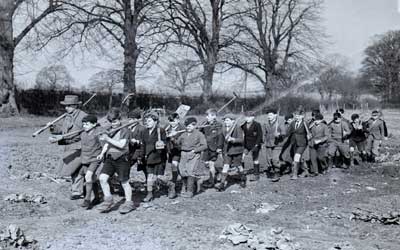 |
 |
 |
 |
 |
 |
 |
 |
 |
 |
 |
 |
 |
 |
 |
 |
 |
 |
 |
 |
 |
 |
 |
 |
 |
 |
 |
 |
 |
 |
 |
 |
 |
 |
 |
 |
 |
 |
 |
 |
 |
Home
|
 |
 |
 |
 |
 |
 |
 |
 |
 |
 |
 |
 |
 |
 |
 |
 |
 |
 |
Ridgmont was a self sufficient thriving village in the years leading up to the Second World War and during the War. Very few people had any form of transport other than a bicycle or a horse, therefore, everything required had to be available within the village, grown by the villagers or delivered into the village. |
 |
 |
 |
 |
 |
 |
 |
 |
 |
 |
 |
 |
 |
 |
 |
 |
 |
 |
 |
 |
 |
 |
 |
 |
 |
 |
 |
The older boys from Ridgmont School, mainly evacuees from London, helped to grow vegetables in the school allotments. ©Bedfordshire and Luton Archives and Records Service |
 |
 |
 |
Prior to the 1930’s, Brogborough was mainly a rural farming area. The area's main landmarks were the formiddable Roundhouse and Brogborough Hill. However, this was soon to change with the building of the Ridgmont Brickworks, which with its 25 chimneys was considered to be the second largest brickworks in the world. People moved from all over the country to work here, therefore a need for good quality housing became a necessity hence the building of the Brogborough Estate. |
 |
 |
 |
The view from Brogborough Hill, overlooking Brogborough and the Ridgmont Brickworks (from the collection of John M Saunders) |
 |
 |
 |
 |
 |
 |
 |
 |
 |
 |
 |
 |
 |
 |
 |
 |
 |
 |
 |
 |



















